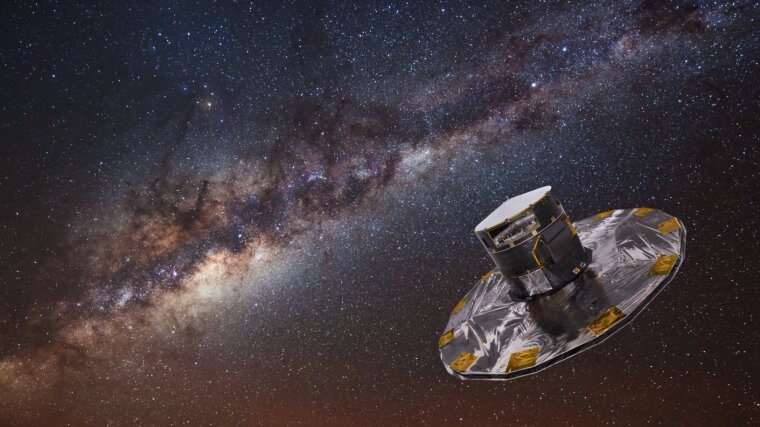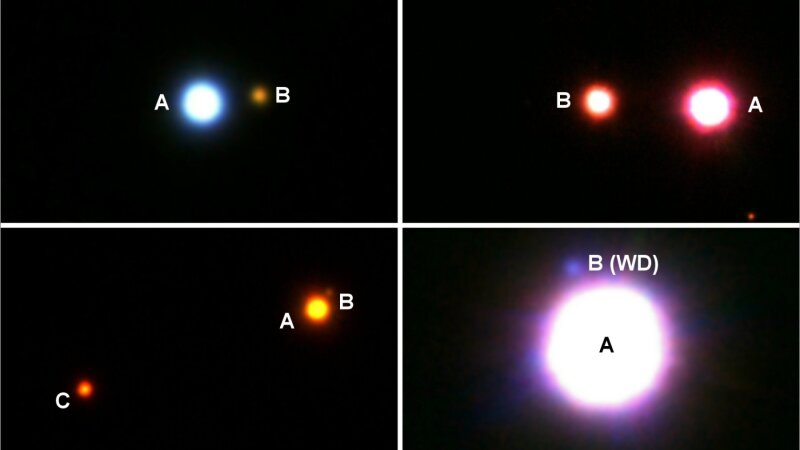
- Research
Published: | By: Ute Schönfelder
People in ancient times knew five planets: Mercury, Venus, Mars, Jupiter and Saturn, which they considered to be "wandering stars". It was only with the Copernican revolution in the 16th century, the Earth itself also became a planet, orbiting our planet host star – the Sun – just like the previously known and later discovered representatives Uranus and Neptune. Until around three decades ago, these eight were the only known planets.
Since then, however, the known family of planets in the universe has expanded enormously: Following the discovery of the first representatives outside our solar system, the number of so-called extrasolar planets (or exoplanets for short) has now grown to over 5,000. "While the vast majority of them orbit single stars like the planets in our solar system, some exoplanets are also part of a multiple star system," says Kai-Uwe Michel, PhD student at the Institute of Astrophysics at the University of Jena. Together with his colleague Dr Markus Mugrauer, he has investigated in a recent study how many of the now known planet host stars have one or even several companion stars, and what influence this stellar multiplicity has on the properties of the planetary systems. The two astrophysicists present their results in the journal Monthly Notices of the Royal Astronomical Society.
Hundreds of companion stars of planet host stars newly discovered
The two researchers carried out their investigations using observation data from the European Space Agency's Gaia space telescope and analysed more than 2,200 planet host stars for possible companion stars. They found about one in five planet host stars. In total, they were able to detect several hundred new companion stars. This means that the number of known exoplanets found in multiple star systems is also increasing. Both companion stars with very small distances to the planet host stars of only a few astronomical units (au) and distant companions with separations of up to 10,000 au were found. One au corresponds to a distance of approx. 150 million kilometres, which is roughly the average separation between the Earth and the Sun. The masses of the detected companion stars also vary substantially, ranging from around eight per cent of the mass of the Sun for the least massive companions to 2.4 solar masses for the most massive companions.
In addition to stars, a number of sub-stellar objects, so-called brown dwarfs, have also been discovered as companions of planet host stars. The majority of the detected multiple star systems with exoplanets are binary stars. In four of these systems, exoplanets were even found around each of the two stars. Furthermore, two companion stars were detected around some planet host stars, which together with the host stars form hierarchical triple star systems.
Heavyweights among the exoplanets more common in multiple star systems
The properties of the discovered star systems with exoplanets are as diverse as the physical and dynamic properties of the planets in these systems. For example, the masses of single star and multiple star planets differ significantly. On average, planets in multiple star systems are nine times more massive than single star planets. The mass of the host stars themselves is also higher on average if they are members of star systems. In multiple star systems, the mass of the planets is also dependent on the gravitational perturbation of the companion star. The stronger this influence is, the higher the average planetary mass. The frequency of the more massive brown dwarfs in these systems also increases with the gravitational perturbation of the companion star.
"Another important characteristic of planets is the eccentricity of their orbit," explains Dr Mugrauer. This has an effect, for example, on the average radiation flux that a planet receives from its host star, which strongly influences its surface temperature, among other things. "It has now been shown that the exoplanets with the highest orbital eccentricities are all found in multiple star systems." In addition, the orbital eccentricity of planets in these star systems increases with the gravitational perturbation of the companion star.
Colour composite images of star systems with exoplanets that were discovered and their properties characterised as part of the study. The images show planet host stars together with their detected stellar companions (labelled with letters). The exoplanets orbit very closely around their host star and are therefore not visible here. In addition to star systems in which the planet host stars are the bright primary components and have low-mass reddish dwarf stars as companions (top left image), star systems with planets were also detected in which the host stars are the lower-mass and less luminous secondary components (top right image). Furthermore, numerous triple star systems with exoplanets were found in the study (bottom left image). In addition, several highly evolved star systems with exoplanets were also discovered (bottom right image), in which their original primary components have already evolved into white dwarfs (WD).
Collage: Markus MugrauerOriginal publication:
Kai-Uwe Michel, Markus Mugrauer, Gaia search for (sub)stellar companions of exoplanet hosts, Monthly Notices of the Royal Astronomical Society, Volume 527, Issue 2, January 2024, Pages 3183–3195, https://doi.org/10.1093/mnras/stad3196External link
